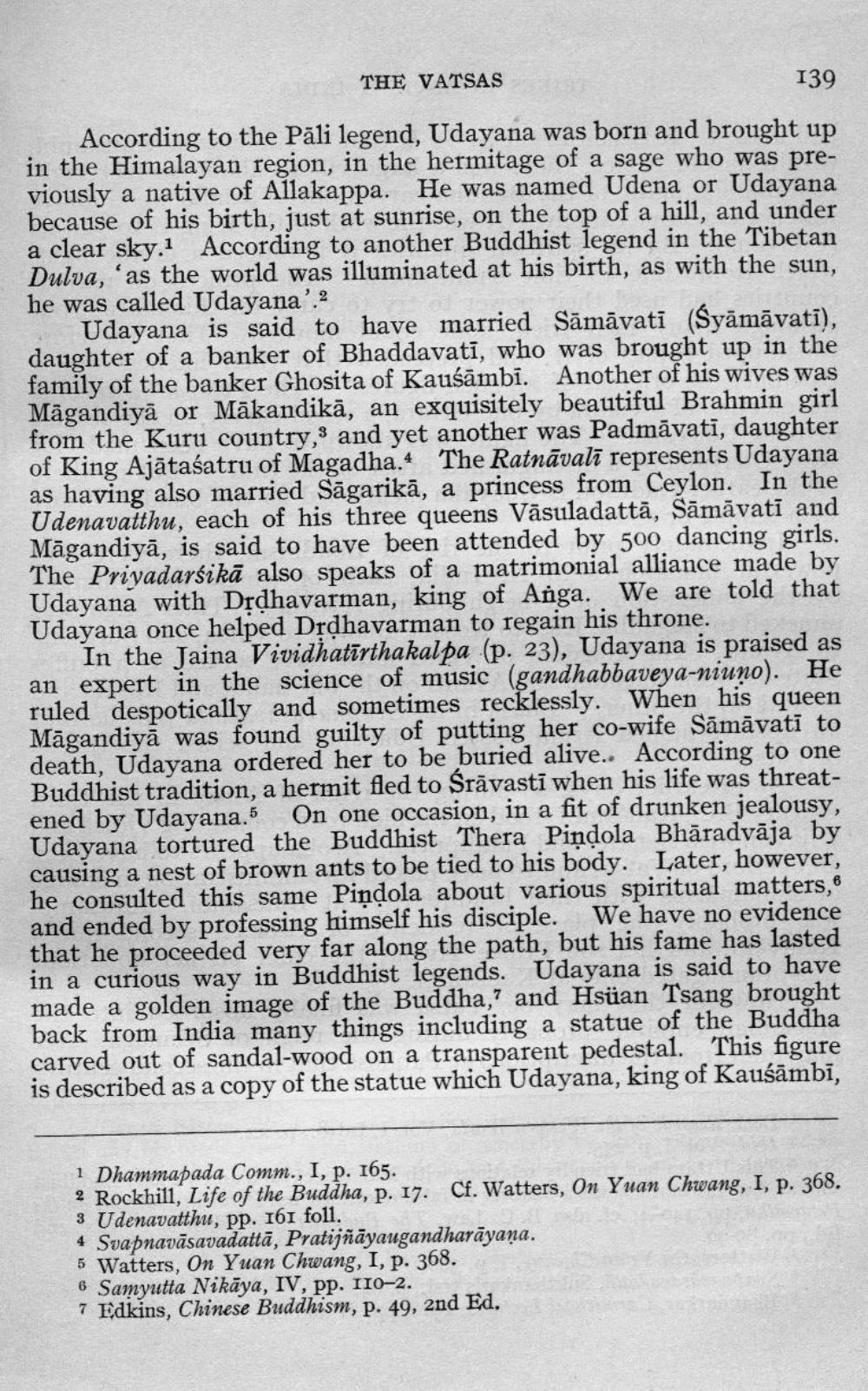________________
THE VATSAS
139
According to the Päli legend, Udayana was born and brought up in the Himalayan region, in the hermitage of a sage who was previously a native of Allakappa. He was named Udena or Udayana because of his birth, just at sunrise, on the top of a hill, and under a clear sky.1 According to another Buddhist legend in the Tibetan Dulva, 'as the world was illuminated at his birth, as with the sun, he was called Udayana'.2
Udayana is said to have married Samavati (Syāmāvati), daughter of a banker of Bhaddavati, who was brought up in the family of the banker Ghosita of Kauśambi. Another of his wives was Magandiya or Makandikā, an exquisitely beautiful Brahmin girl from the Kuru country, and yet another was Padmavati, daughter of King Ajātasatru of Magadha. The Ratnavali represents Udayana as having also married Sagarika, a princess from Ceylon. In the Udenavatthu, each of his three queens Vasuladattă, Sāmavati and Magandiya, is said to have been attended by 500 dancing girls. The Priyadarsika also speaks of a matrimonial alliance made by Udayana with Drdhavarman, king of Anga. We are told that Udayana once helped Drdhavarman to regain his throne.
In the Jaina Vividhatirthakalpa (p. 23), Udayana is praised as an expert in the science of music (gandhabbaveya-niuno). He ruled despotically and sometimes recklessly. When his queen Magandiya was found guilty of putting her co-wife Samavati to death, Udayana ordered her to be buried alive.. According to one Buddhist tradition, a hermit fled to Śrāvasti when his life was threatened by Udayana.5 On one occasion, in a fit of drunken jealousy, Udayana tortured the Buddhist Thera Pindola Bharadvaja by causing a nest of brown ants to be tied to his body. Later, however, he consulted this same Pindola about various spiritual matters, We have no evidence and ended by professing himself his disciple. that he proceeded very far along the path, but his fame has lasted in a curious way in Buddhist legends. Udayana is said to have made a golden image of the Buddha, and Hsüan Tsang brought back from India many things including a statue of the Buddha This figure carved out of sandal-wood on a transparent pedestal. is described as a copy of the statue which Udayana, king of Kauśāmbi,
1 Dhammapada Comm., I, p. 165.
2 Rockhill, Life of the Buddha, p. 17. Cf. Watters, On Yuan Chwang, I, p. 368. 3 Udenavatthu, pp. 161 foll.
4 Svapnavāsavadatta, Pratijñāyaugandharāyaṇa.
5 Watters, On Yuan Chwang, I, p. 368.
6
6 Samyutta Nikaya, IV, pp. 110-2.
7 Edkins, Chinese Buddhism, p. 49, 2nd Ed.




